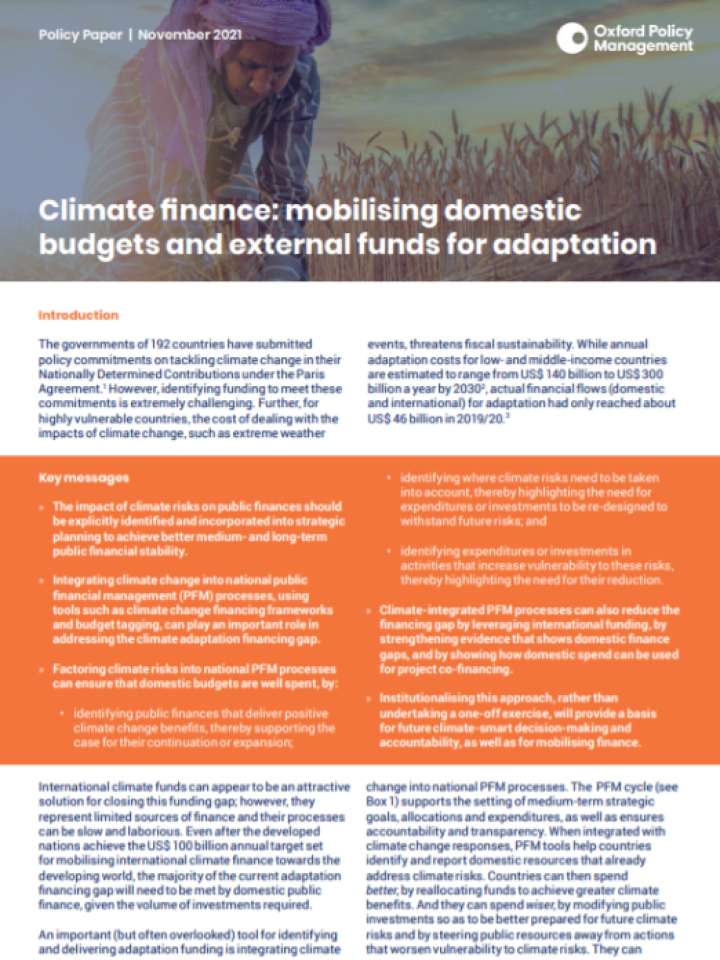Climate finance: mobilising domestic budgets and external funds for adaptation
This policy paper detail how vulnerable countries can bridge the gap between estimated climate adaptation costs and actual financial flows as realization of commitments remains intermittent. For highly vulnerable countries, the cost of dealing with the impacts of climate change, such as extreme weather events, threatens fiscal sustainability. While annual adaptation costs for low- and middle-income countries are estimated to range from US$ 140 billion to US$ 300 billion a year by 20302, actual financial flows (domestic and international) for adaptation had only reached about US$ 46 billion in 2019/20. International climate funds represent limited sources of finance and their processes can be slow and laborious. Even after the developed nations achieve the US$ 100 billion annual target set for mobilising international climate finance towards the developing world, the majority of the current adaptation financing gap will need to be met by domestic public finance, given the volume of investments required.
This paper recommends integrating climate change into national public financial management (PFM) processes, using tools such as climate change financing frameworks and budget tagging. Climate-integrated PFM processes can also reduce the financing gap by leveraging international funding, by strengthening evidence that shows domestic finance gaps, and by showing how domestic spend can be used for project co-financing. Institutionalising this approach, rather than undertaking a one-off exercise, will provide a basis for future climate-smart decision-making and accountability, as well as for mobilising finance.
Explore further
